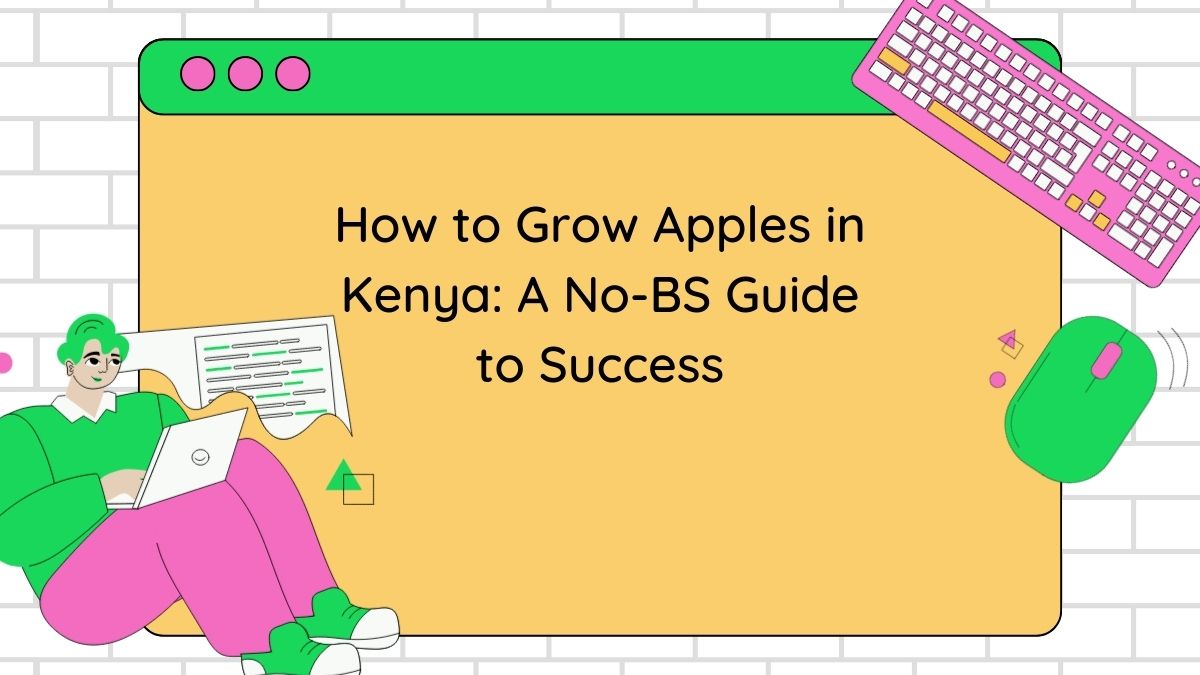How to Grow Apples in Kenya: A No-BS Guide to Success
Think growing apples in Kenya is a pipe dream?
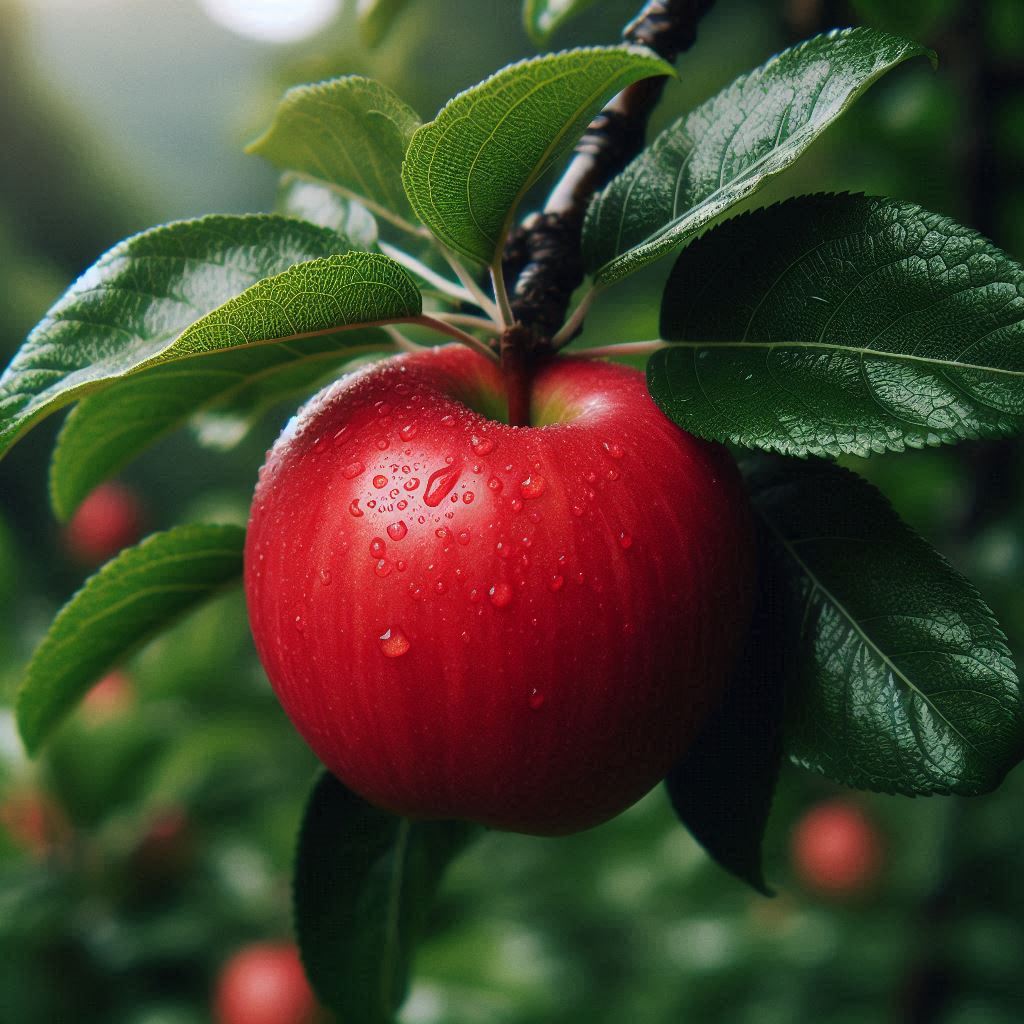
Think again.
While Kenya might be known for its coffee and tea, you can absolutely cultivate juicy, delicious apples right here in this East African paradise.
This isn’t some feel-good farming fairytale. This is about understanding the game, playing it smart, and reaping the rewards.
So, if you’re ready to ditch the supermarket apples and bite into your own homegrown harvest, let’s get started.
Is apple farming profitable in Kenya?
Let’s get straight to the point: can you actually make money growing apples in Kenya?
The answer is a resounding YES. But like any business, it’s not about simply planting trees and waiting for the cash to roll in.
It’s about strategy, execution, and maximizing your return on investment.
The Profit Potential of Apple Farming
Forget those get-rich-quick schemes.
Apple farming is a long-term game.
But the payoff can be substantial if you play your cards right.
Here’s a breakdown of the potential revenue and expenses:
Revenue:
- Yield: A mature Wambugu apple tree can produce over 500 apples per season.
- Price: Farm gate prices for apples in Kenya range from Ksh 15-30 per apple.
- Market: Demand for apples in Kenya is high, with a significant portion being imported. This creates a lucrative opportunity for local farmers.
Expenses:
- Initial investment: Land, seedlings, irrigation, and labor.
- Ongoing costs: Fertilizer, pest control, pruning, and harvesting.
The bottom line:
With proper management, an acre of apple orchard can generate Ksh 500,000 or more in annual revenue. That’s a significant return on your investment.
But here’s the catch:
These figures are just estimates. Your actual profitability will depend on several factors:
- Variety: Wambugu apples are your best bet for high yields and early maturity.
- Management: Proper care, including watering, fertilizing, and pest control, is crucial for maximizing yields.
- Market access: Having a reliable market for your apples is essential for profitability.
Strategies for Apple Farming Success
Want to turn your apple orchard into a cash cow? Here’s how to boost your profits:
- High-Density Planting: Maximize your land use by planting more trees per acre.
- Value-Added Products: Don’t just sell raw apples. Explore value-added products like apple juice, jams, and dried apples to increase your revenue streams.
- Direct Marketing: Cut out the middleman and sell directly to consumers through farmers’ markets, online platforms, or your own farm store.
- Cost Control: Keep a close eye on your expenses and look for ways to reduce costs without compromising quality.
- Continuous Learning: Stay updated on the latest apple farming techniques and best practices to improve your efficiency and profitability.
Actionable Advice:
- Develop a solid business plan before you start planting.
- Invest in high-quality seedlings from reputable nurseries.
- Build relationships with potential buyers before your harvest is ready.
- Explore government programs and initiatives that support apple farmers.
How to Grow Apples in Kenya
1. Choosing the Right Apple Variety: Not All Apples Are Created Equal
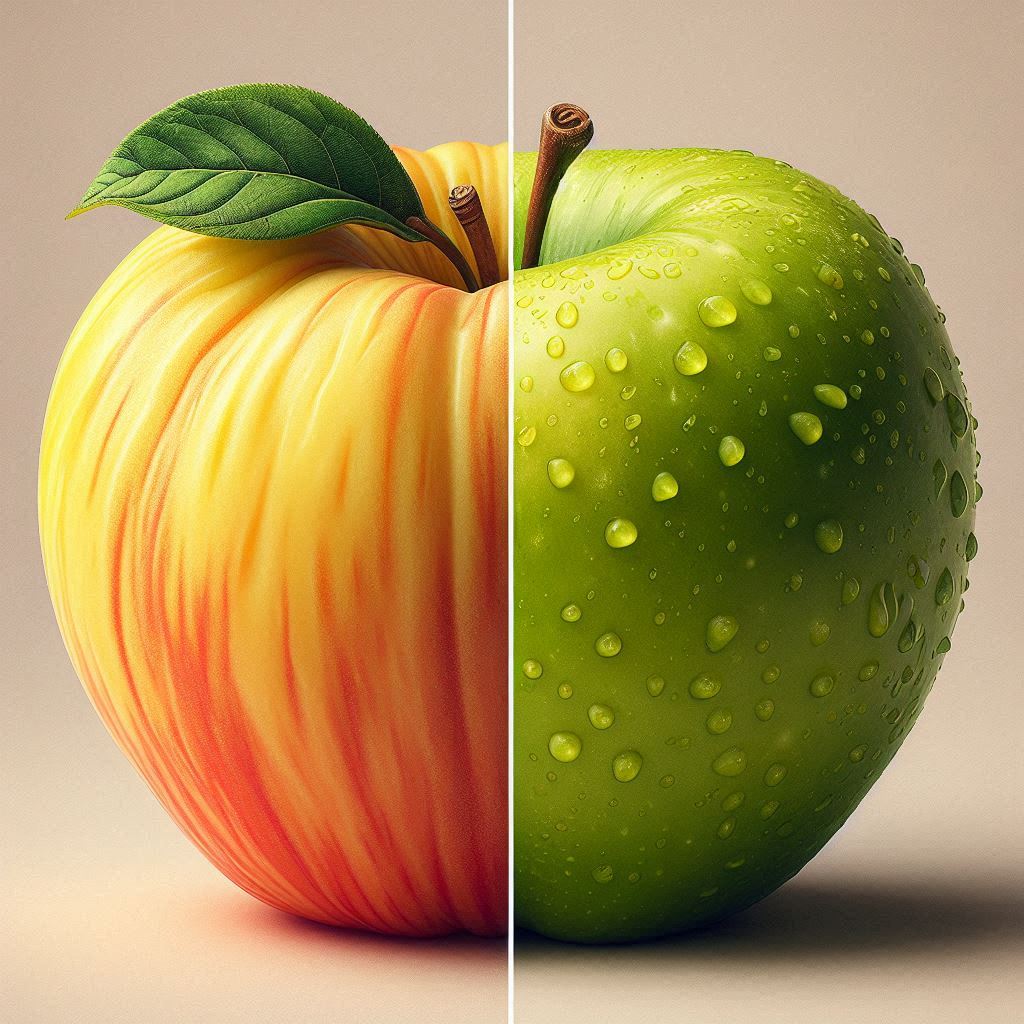
First things first, you need to pick the right weapon for this battle.
In this case, your weapon is the apple variety.
Forget about Granny Smith or Honeycrisp. Those divas are too accustomed to temperate climates.
You need a variety that can handle the Kenyan heat. And there’s one clear winner: the Wambugu apple.
This local champion is not only resistant to diseases and pests but also thrives in Kenya’s warmer climate. It’s your shortcut to apple-growing success.
Here’s why Wambugu apples are a smart choice:
- Heat tolerant: They can handle the Kenyan sun without breaking a sweat.
- Disease resistant: Fewer headaches dealing with pests and diseases.
- High yield: More apples for you to enjoy or sell.
- Locally adapted: They’re already used to the Kenyan environment.
Actionable advice:
- Source your Wambugu apple seedlings from reputable nurseries.
- Don’t waste time and money experimenting with varieties that aren’t suited for Kenya.
2. Soil Preparation
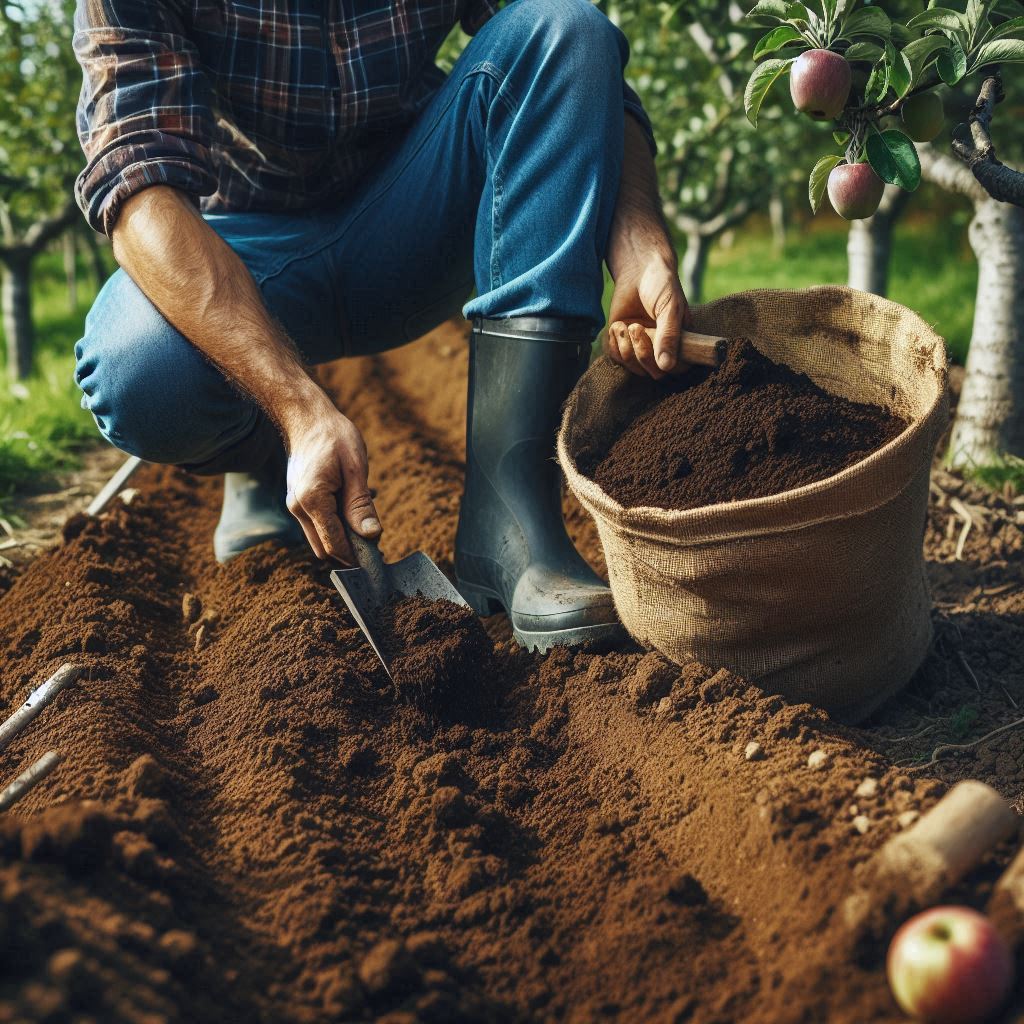
You wouldn’t build a skyscraper on shaky ground, would you? The same goes for your apple trees.
They need a solid foundation to thrive, and that foundation is your soil.
Here’s how to get your soil in shape:
- Well-drained soil: Apples hate soggy feet. Ensure your soil drains well to prevent root rot.
- Slightly acidic pH: Aim for a pH between 6.0 and 7.0. You can test your soil with a simple pH testing kit.
- Organic matter: Add compost or well-rotted manure to improve soil fertility and structure.
- Sunlight: Choose a spot that gets at least 6 hours of direct sunlight daily.
Actionable advice:
- Get a soil test to understand your soil’s composition and pH level.
- Amend your soil with compost or manure at least a month before planting.
- Choose a sunny location with good drainage.
3. Planting Your Apple Trees
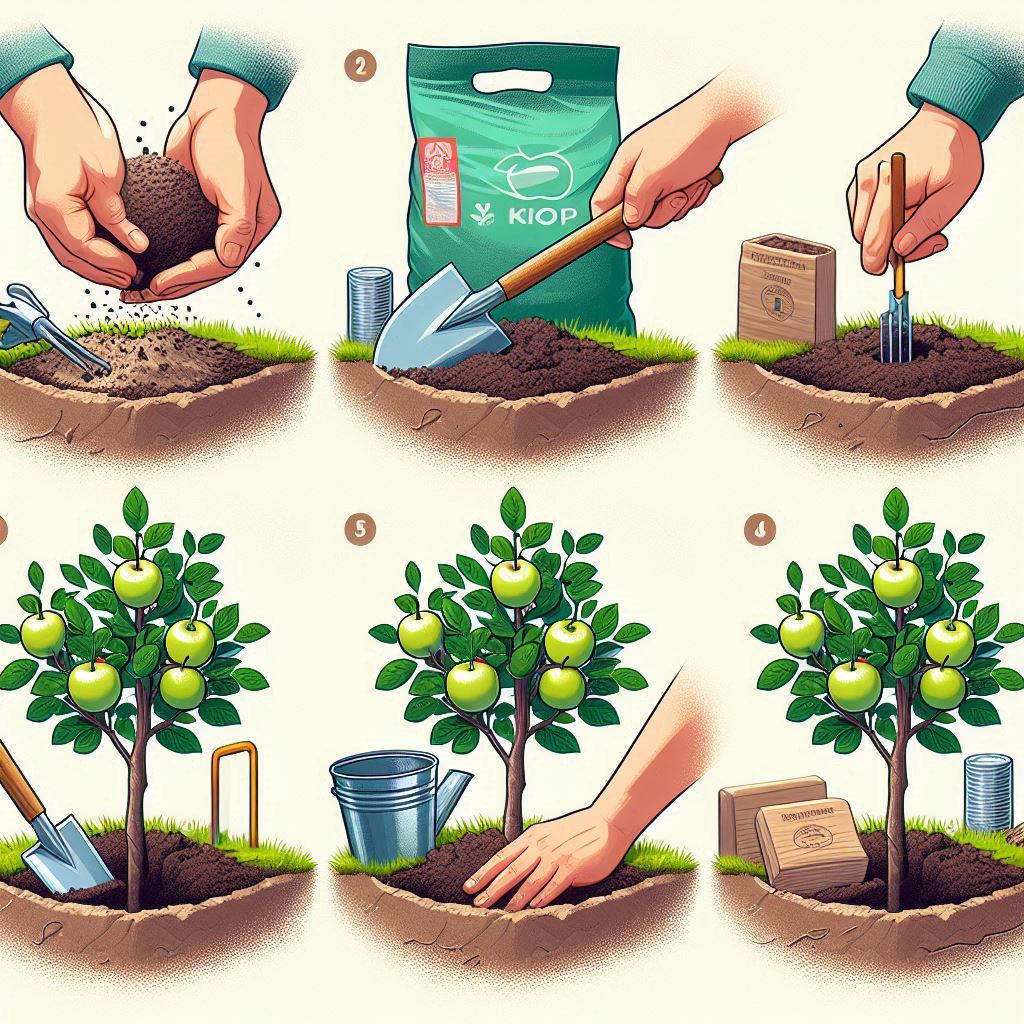
Planting an apple tree isn’t rocket science, but there’s a right way and a wrong way to do it.
Follow these steps to give your trees the best start:
- Dig a hole: Make it twice as wide as the root ball and just as deep.
- Add fertilizer: Mix some well-rotted manure or compost into the soil at the bottom of the hole.
- Place the seedling: Gently remove the seedling from its container and place it in the hole.
- Backfill the hole: Fill the hole with soil, making sure the graft union (the swollen part near the base of the trunk) is above the soil line.
- Water thoroughly: Give the newly planted tree a good soaking.
Actionable advice:
- Plant your apple trees during the cooler months, ideally between March and May or September and November.
- Space your trees about 3-4 meters apart to allow for growth.
- Water your trees regularly, especially during dry periods.
4. Watering and Fertilizing
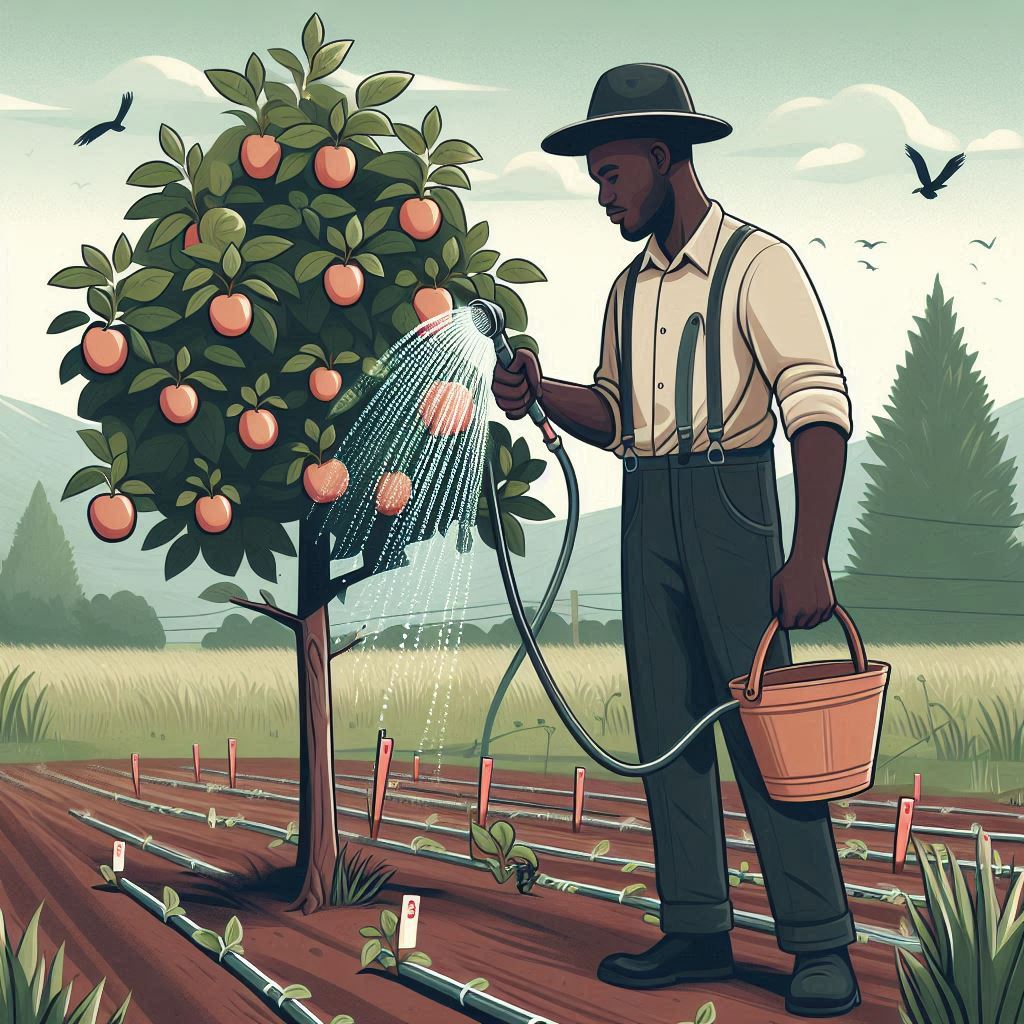
Your apple trees need consistent watering, especially during their first few years.
But don’t drown them! Overwatering can lead to root rot and other problems.
Here’s a watering schedule to follow:
- Young trees: Water deeply once a week, or more often during hot, dry weather.
- Mature trees: Water deeply every two weeks, or more often during dry spells.
Fertilizing is also crucial for healthy growth:
- Young trees: Fertilize with a balanced fertilizer three times a year: in early spring, late spring, and early summer.
- Mature trees: Fertilize once a year in early spring.
Actionable advice:
- Use a drip irrigation system to deliver water directly to the roots.
- Mulch around the base of your trees to conserve moisture and suppress weeds.
- Monitor your trees for signs of nutrient deficiencies, such as yellowing leaves.
5. Pruning and Training
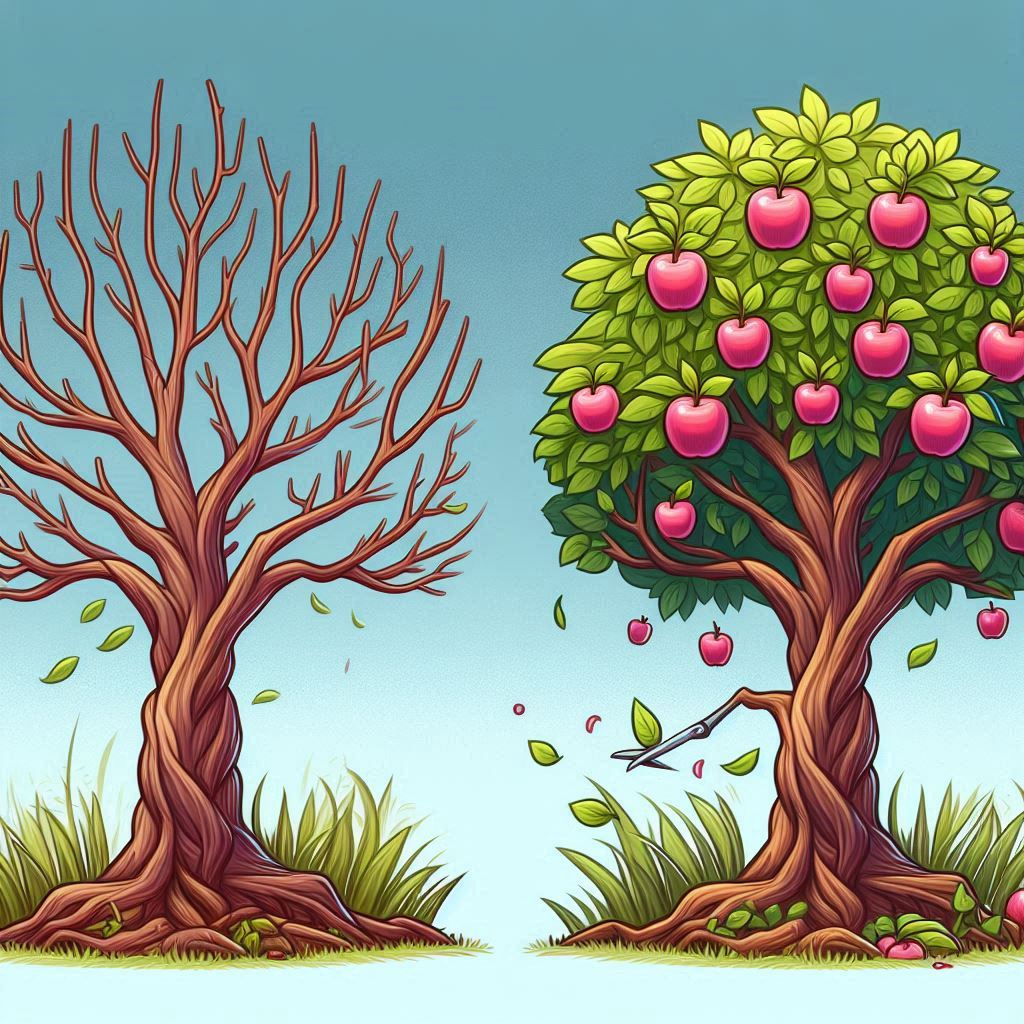
Think of pruning as giving your apple tree a haircut.
It’s essential for maintaining its shape, promoting air circulation, and encouraging fruit production.
Here’s a basic pruning guide:
- Young trees: Prune to establish a central leader and scaffold branches.
- Mature trees: Prune to remove dead, diseased, or crossing branches.
- Timing: Prune during the dormant season, ideally in June or July.
Training your trees is also important:
- Young trees: Use stakes or trellises to support the trunk and branches.
- Mature trees: Thin out excess fruit to ensure larger and healthier apples.
Actionable advice:
- Use sharp pruning shears to make clean cuts.
- Avoid pruning too much at once.
- Learn the basics of apple tree training to maximize your yield.
6. Pest and Disease Control
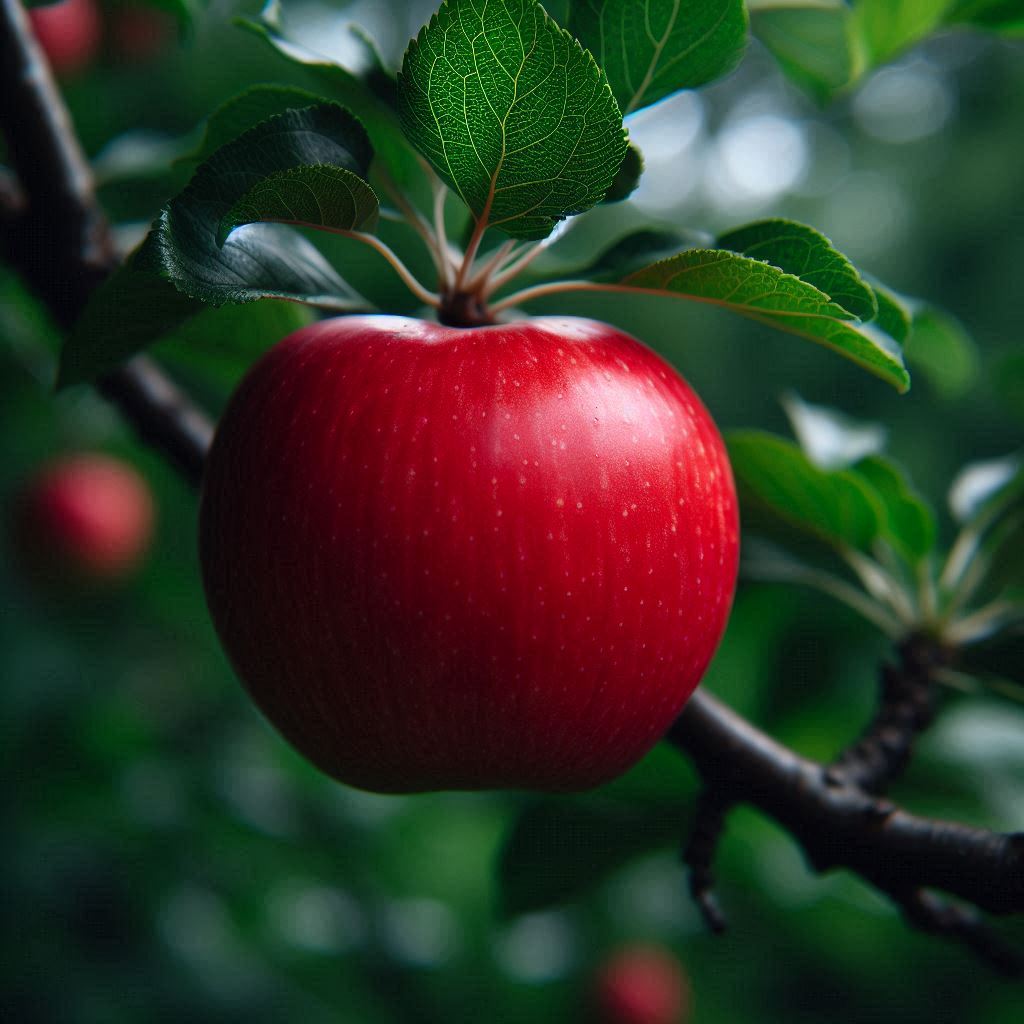
Pests and diseases can wreak havoc on your apple trees.
But with vigilance and proactive measures, you can keep them at bay.
Common pests in Kenya:
- Apple codling moth: These pests lay eggs on developing apples, causing wormy fruit.
- Aphids: These tiny insects suck sap from leaves and stems, weakening the tree.
- Scale insects: These pests attach themselves to branches and suck sap, causing stunted growth.
Common diseases:
- Apple scab: This fungal disease causes scabby lesions on leaves and fruit.
- Powdery mildew: This fungal disease causes a white powdery coating on leaves and stems.
- Fire blight: This bacterial disease causes blossoms and shoots to wilt and die.
Actionable advice:
- Monitor your trees regularly for signs of pests and diseases.
- Use organic pest control methods whenever possible.
- Consult with a local agricultural extension officer for advice on specific pest and disease problems.
7. Harvesting and Storage

After all your hard work, it’s time to enjoy the fruits of your labor!
Here’s how to know when your apples are ready for harvest:
- Color: The skin should be fully colored for the variety.
- Touch: The apple should feel firm but slightly give to pressure.
- Taste: Take a bite! A ripe apple will be sweet and juicy.
Proper storage is key to extending the shelf life of your apples:
- Cool and humid: Store apples in a cool, humid place, such as a refrigerator or root cellar.
- Separate: Don’t store apples with other fruits or vegetables, as they can release ethylene gas, which can cause apples to ripen faster.
Actionable advice:
- Harvest your apples in the morning when they are cool.
- Handle apples gently to avoid bruising.
- Enjoy your fresh apples or use them to make delicious jams, pies, and other treats.
How long do apples take to grow in Kenya?
You’re not just growing apples, you’re growing a business.
And in business, time is money.
So, how long until you can turn those apple seedlings into cold hard cash?
Let’s break it down.
The Apple Growth Cycle
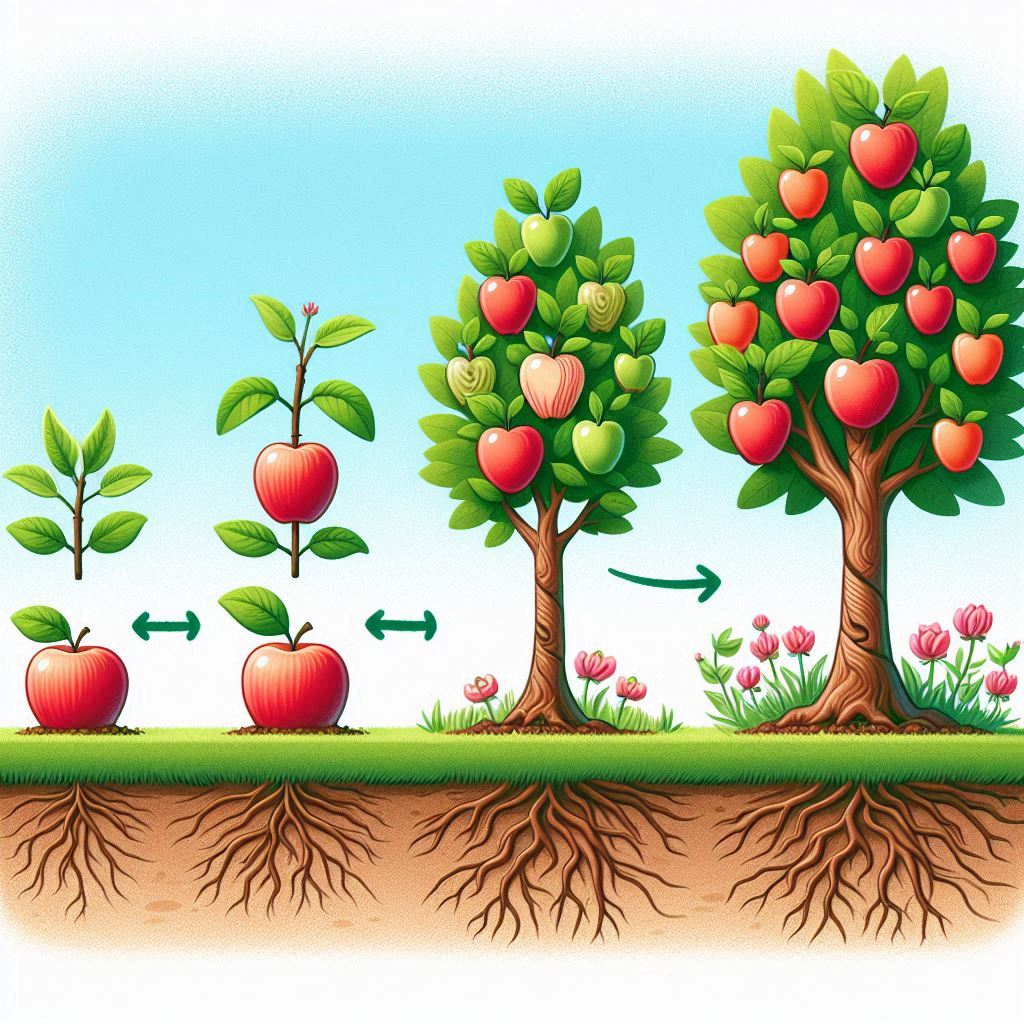
Growing apples isn’t an overnight thing. It’s a marathon, not a sprint.
But with the right approach, you can accelerate the process and start seeing returns sooner.
Here’s a general timeline for apple tree growth in Kenya:
- Year 1-2: The Foundation. This is when your tree focuses on establishing its root system and building a strong framework. Don’t expect much fruit production during this phase. It’s all about laying the groundwork for future success.
- Year 3-4: The Growth Spurt. Your tree starts to put on significant growth, branching out and developing its canopy. You might see a few apples here and there, but the real harvest is still to come.
- Year 5-7: The Payoff. This is when your tree hits its stride. Expect a significant increase in fruit production. It’s time to start reaping the rewards of your hard work.
- Year 8+: The Golden Years. Your tree reaches maturity and continues to produce abundant harvests year after year. With proper care, your apple tree can remain productive for decades.
But here’s the kicker:
Wambugu apples, your secret weapon for Kenyan apple growing, can actually start producing fruit as early as 2-3 years after planting.
That’s a significant advantage over other varieties that might take 5-7 years to bear fruit.
Tips to Accelerate Apple Growth
Want to fast-track your apple orchard’s success? Here’s how to give your trees a boost:
- Optimal Planting: Plant your trees at the right time (March-May or September-November) and in the right location (well-drained soil, full sun). A strong start sets the stage for rapid growth.
- Nutrient Powerhouse: Feed your trees with a balanced fertilizer to fuel their growth. Don’t starve them of the essential nutrients they need to thrive.
- Thirst Quencher: Consistent watering is crucial, especially during the early years. But remember, don’t overwater!
- Pruning Prowess: Proper pruning encourages healthy growth and directs energy towards fruit production. Learn the art of pruning to maximize your tree’s potential.
- Pest & Disease Patrol: Protect your investment from pests and diseases that can hinder growth and reduce yields. Stay vigilant and take proactive measures to keep your trees healthy.
Actionable Advice:
- Don’t get discouraged if you don’t see a lot of fruit in the first few years. Focus on building a strong foundation for future harvests.
- Monitor your trees closely and adjust your care practices as needed.
- Consider using grafting techniques to further accelerate fruit production.
Patience Pays Off, But Smart Strategies Pay Off Faster
Growing apples takes time, but with the right strategies, you can shorten the waiting period and start enjoying your own homegrown apples sooner.
Choose Wambugu apples, optimize your growing practices, and watch your apple orchard flourish.
Remember, success in the apple growing game is about playing smart, not just playing hard.
Growing Apples in Kenya is Within Your Reach
Growing apples in Kenya might seem like a challenge, but with the right knowledge and approach, it’s entirely achievable.
Remember to choose the right variety, prepare your soil properly, and provide your trees with the care they need.
With dedication and persistence, you’ll be rewarded with a bountiful harvest of delicious, homegrown apples.
So, what are you waiting for? Get out there and start planting!
Read also:

